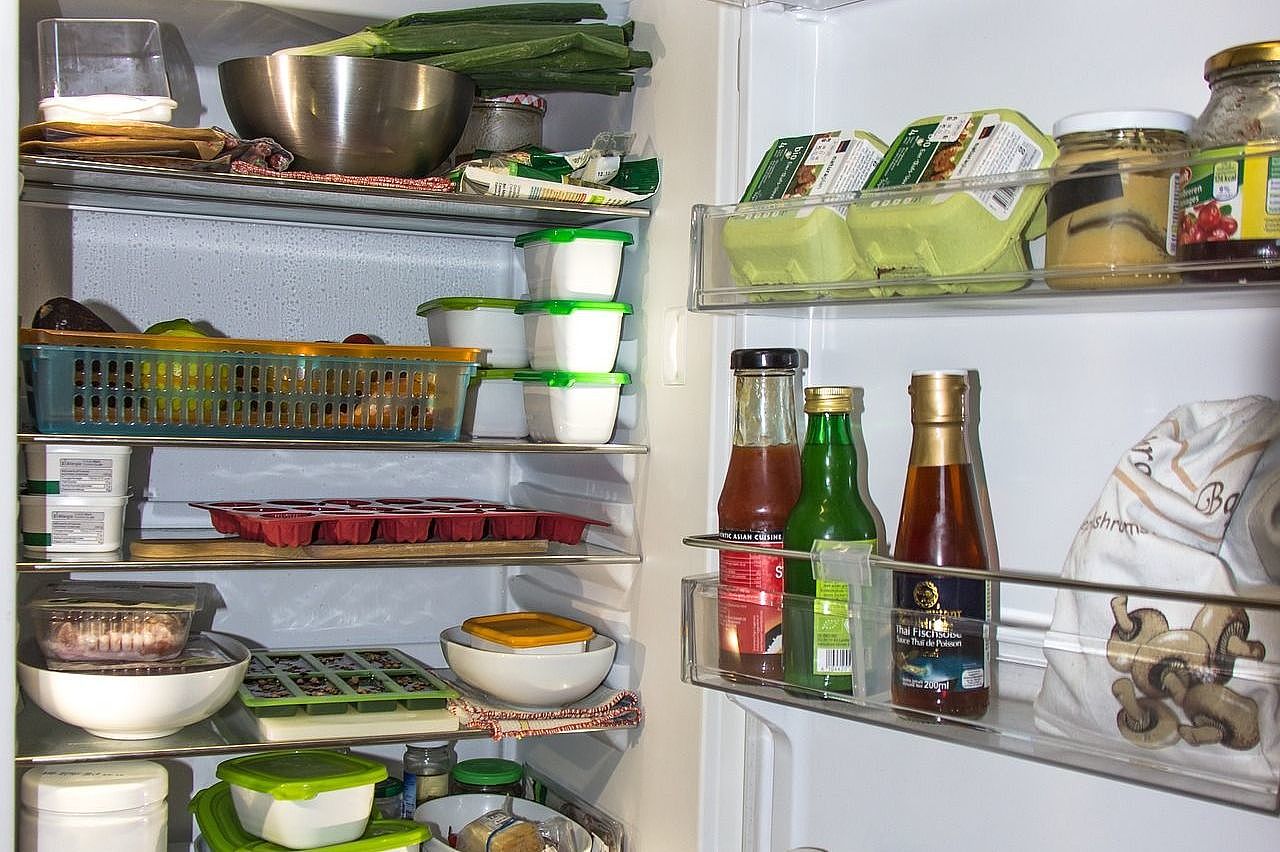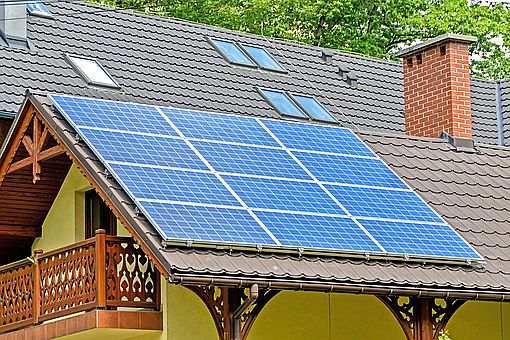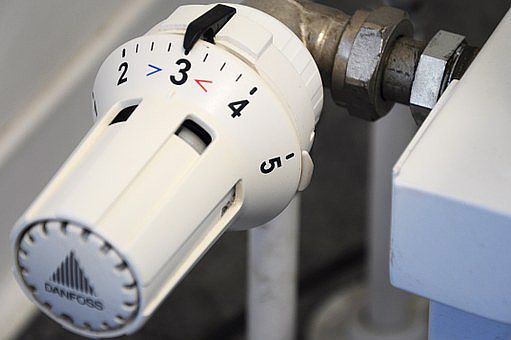Ecological Footprint
By significantly reducing our CO2 footprint, we can make a personal contribution to climate protection.
In addition to (inter)national climate policy and savings or climate-friendly innovations by large-scale industry, households, municipalities, organisations and small and medium-sized enterprises are an important building block for effectively combating climate change. On this site we provide information on how you - as an individual, as an active member of the congregation or as an employee of an organisation - can actively protect the climate. Please do not hesitate to contact us if you have any questions.
- The section climate-friendly mobility provides information on the area that makes up about a quarter of our ecological footprint: Mobility
- About a quarter of our CO2 footprint is generated by heat and electricity. Find out how you can save and reduce CO2 in this area.
- By switching to green electricity, you can quickly make a good contribution to the expansion of renewable energies and also improve your personal balance.
- The most beautiful time is the climate-friendly holiday season! If you think in this or that way and would like to travel to other regions of the world, and want to make this as climate-friendly as possible, take a look here.
- Plan your next event in a climate-friendly manner and get inspired here.
Climate-friendly mobility
In the area of mobility, many emissions can be saved if you pay attention to these three key concepts:
- Avoid: Avoid unnecessary journeys and transports.
- Shift: Switch to environmentally friendly means of transport.
- Improve: Choose economical vehicles and use them more efficiently.
Did you know, for example, that half of all car journeys are shorter than five kilometres? If only 30 percent of these journeys were made by bicycle instead of by car, around 2.5 million tons of CO2 could be avoided every year.
- Switching to a bicycle is not only good for the environment and your health, but also for your wallet: driving a car on short distances can be surprisingly expensive. A cold engine consumes up to 35 litres of fuel per 100 kilometres. Only after the fourth kilometre does fuel consumption gradually return to normal.
- Use public transport: 95 percent of CO2 emissions from traffic are caused by road traffic. If you switch to rail for long-haul journeys, you avoid around two thirds of the carbon dioxide emissions of a car.
- Benefit without owning: Have you ever thought about car sharing? If you are rarely and/or irregularly travelling by car and drive less than 10,000km per year, car sharing is suitable for you. If you don't necessarily have to rely on your own car, you can usually travel cheaper with a shared car than with a private car and you can also choose the most suitable vehicle for different transport needs. A car is indispensable where you live? In fact, especially in rural areas, many people depend on a car. But perhaps it is worthwhile to establish carpools? Carpooling is a cost-effective, climate-friendly and mostly entertaining way to get to your destination. Why don’t you get together with colleagues for the daily trip to work?
- Carpooling is not just for people: If you want to transport some objects or single pieces of furniture, you don't need an entire moving van. This is where the furniture carpool comes in! These are offered by private individuals or removal companies who travel the same route as you and who still have room for your furniture transport. This way, everyone benefits, the vehicle is fully loaded and you pay less than for regular transport and the environment is protected. You can offer this take-away service on the specialised Internet portals too, if you are travelling with a larger vehicle and still have space.
- Are you planning a celebration in your congregation and looking forward to numerous guests? The joy can be even greater if they arrive in a climate-friendly way: In the invitation, point out how to get there by public transport or bicycle and encourage car-pooling.
- Would you have thought that just less than 2.65 million tonnes of CO2 would be saved annually if only ten percent of German drivers took all fuel-saving tips to heart and thus reduced their fuel consumption by 30 percent?
- Cheap flights are tempting: Why not take a short holiday to Spain when it costs almost "nothing"? But the price for a plane ticket unfortunately does not include the costs for the damage to the climate. Whether it's a low-cost airline or a luxury airline, air travel is a major burden on the climate and should be avoided as far as possible. There are often alternative ways to get there, for example by train or coach. Some business trips can even be completely replaced by telephone conferences - and a relaxed weekend in the surrounding area is perhaps more relaxing than a short trip to Spain. If you still can't avoid travelling by plane, for example because your destination is on the other side of the Atlantic, you should take the following principle to heart: fly less often, stay longer. In addition you can at least limit the damage through carbon offset measures. If you want to make your holiday as sustainable and conscious as possible, you will be confronted with many labels that ECOTRANS e.V., the EED and others.
Heating & Electricity
A great deal of energy can often still be saved in heating and electricity consumption. In 1990, Germans consumed about the same amount of energy as in 2015 - and that despite the fact that many appliances are becoming more energy-efficient, heating become systems more efficient and rooms better insulated. More energy-efficient appliances are compensated by a rise in the number of appliances, economical heaters by an increase in living space and better insulated apartments by a decrease in the number of residents. Saving energy protects the climate and saves money. Whether at home, office or church: there are so many small and large things we can do that we can only present a small selection here.
1. On the trail of electricity guzzlers
Did you know that approximately 4.6 percent of the total electricity consumption in Germany is generated annually by devices that are not used at the moment? These idling losses occur because the devices also draw power when they are in standby mode, for example. Some computers and consumer electronics even consume electricity when they are "switched off" at the main switch. Even devices without a circuit breaker (such as chargers) usually draw power as long as they are plugged in.
With an electricity meter placed between the socket and the appliance, you can check how much energy your electrical appliances consume and thus locate energy guzzlers. Even secret "power robbers" such as TVs that seem to be switched off or computers in standby mode can be caught in this way. Power robbers can be stopped by using multiple socket strips that can be turned off, or by completely unplugging a device when you're not using it. A convenient, but slightly more expensive solution is to use modern control gears that are plugged in between the device and the wall outlet and automatically detect when a device is in standby mode. The current flow is then automatically switched off completely.
2. Cooling food appropriately
Refrigerators and freezers on average consume one fifth of the electricity of a household. It is therefore worth paying attention to their consumption! When buying a new one, it makes sense to take a look at electricity consumption. Because the appliances run constantly, even small differences in consumption can make a big difference. The energy efficiency class provides a reference point. Cooling appliances are best labelled A++. But there are also big differences within a class, so always compare if possible
A relatively low temperature results in relatively high power consumption. A storage temperature of 7 °C in the refrigerator and minus 18 °C in the freezer is generally sufficient. The energy consumption of a (freezer) refrigerator also depends on how much heat gets into the interior of the appliance and then has to be brought out again using energy. It helps the climate if the appliance is installed in a cool room and proximity to heat sources such as a stove or radiator is avoided. Heated food should be allowed to cool before being placed in the refrigerator or freezer.
3. Regulating the room during winter
In colder latitudes, heating still accounts for the lion's share of a good two third of the final energy demand. Lowering the room temperature by only 1°C reduces heating energy consumption by around six percent. With a heating oil consumption of 1000 litres, this already saves 180 kg of CO2. Room temperatures of 20°C in living and working rooms and 14°C to 18°C in bedrooms are recommended.
If you are away for a longer period of time, it is recommended to turn down the heating and set the average temperature to 15°C for an absence of one or two days and to 12°C for a longer absence. Even unused rooms such as guest rooms do not always need to be heated. Covered or blocked radiators do not distribute heat properly in the room. Curtains should not cover the thermostatic valves so that they can regulate the room temperature correctly.
4. Regulating room temperature during summer
To achieve a pleasant room temperature in summer in a climate-friendly way, ventilate early in the morning, late in the evening or at night. Moisture and heat can best be expelled by cross or impact ventilation. It is also important to keep hot air out as much as possible and provide sufficient shade. Close windows and curtains in time and lower blinds or shutters before it gets hot outside. Reduce additional heat sources by switching off unused electrical appliances, power supplies and lamps. On particularly hot days, you should use a fan rather than an air conditioner that consumes much more energy.
When building and renovating for energy efficiency, summer thermal insulation should be taken into account from the outset, because climate change not only causes average annual temperatures to rise, but in summer heat waves also become more frequent. Thermal insulation and ventilation, as well as other structural measures such as the orientation of the building and shading elements, should therefore be coordinated in such a way that they achieve appropriate room temperatures in both winter and summer in the most energy-saving manner possible.
Using green energy
100 percent renewable energies are the big target. In 2013, a quarter of the electricity produced in Germany came from renewable energy sources; by 2015 it was already a third. Here we show you how you can contribute to making it even more.
SWITCHING TO GREEN ELECTRICITY - BUT RIGHT
Switching to green electricity is a particularly effective way to reduce your own CO2 emissions in just one step. While 1000 kilowatt hours of the average German electricity mix cause approximately 630 kg CO2 equivalents, the figure for green electricity is only about 40 kg (the amount varies with the supplier's energy source mix). By the way, switching to the new electricity supplier is quite simple: As a rule, the application for electricity supply and the last electricity bill are sufficient. The new supplier will take care of everything else for you!
To ensure that the purchase of electricity from renewable energies not only improves your personal CO2 balance, but also really does something for the climate, there are a few things you should bear in mind. Because: Decisive for the contribution to climate protection is whether electricity from non-renewable sources is actually replaced by electricity generated in an environmentally friendly way. This is often not the case with the green electricity products offered by conventional electricity providers: Here, for example, electricity from hydroelectric power plants that have existed for decades is sold separately as green electricity, while the remaining customers receive an electricity mix with a higher proportion from fossil and nuclear energy sources. There is no climate protection effect.
Criteria for green electricity suppliers
Green electricity suppliers should therefore commit themselves to pushing ahead with the expansion of renewable energies. To make it easier for customers to choose, there are now quality seals such as the “Green Power Label” .. They guarantee that the electricity actually comes from renewable energy sources or relatively environmentally friendly combined heat and power and that a fixed portion of the proceeds goes to new regenerative plants.
Further advantages for genuine green electricity suppliers:
- Independence from producers of nuclear and coal-fired electricity
- No use of so-called RECS certificates (see box below) to cover the demand for green electricity. In Germany, Naturstrom, Greenpeace Energy among others, and the suppliers awarded the Green Power Label do not use RECS certificates. Elektrizitätswerke Schönau and Lichtblick only use RECS as a detection system.
Electricity suppliers who offer only certified green electricity (OK Power Label and/or Green Electricity Label):
- BayWa
- Entega
- GrünHausEnergie
- Lekker Energie
- Lichtblick
- MANN Naturenergie
- Naturenergie
- Naturstrom
- Naturstrom Rheinland Pfalz
- Polarstern Energie
- Stadtwerke Neuss
- Stadtwerke Soest
- Stadtwerke Soltau
- Städtische Werke AG Kassel
- Tchibo
(If you find errors in this list or miss providers, please mail us!)
Climate-friendly vacation
For us, an annual holiday can be the best way to leave everyday life as far behind us as possible. Often we don't consider the trip’s negative impact on the environment. Mobility, accommodation and activities generate large quantities of greenhouse gases. According to the United Nations World Tourism Organization (UNWTO) 75 percent of emissions are at the expense of mobility. According to the “Forschungsgemeinschaft Urlaub und Reisen” (Research Association for Vacation and Travel), about 39 percent of people in Germany use airplanes, a particularly climate-damaging means of transport. Due to the high altitude of medium and long-haul flights, emissions remain in the atmosphere and heat up the earth, i.e. the exhaust fumes cannot be partially bound by trees or water bodies - the climate effect is about three times as high. For the vacation journey the private car is used even more frequently than the airplane (approximately 46 percent). However, this is not really a climate-friendly alternative. Only about 13 percent of travellers travel by bus or train.
One round-trip ticket to Majorca, please. To get an idea about the amount of emissions, here is an example of the trip from Berlin to Majorca, the popular travel destination of the Germans: The outward and return flights by plane cause around 1t of CO2 per person. The use of the car also generates 1t CO2 - but if two people are sitting in this vehicle, the footprint is already reduced to 0.52 t CO2 per capita for the arrival and departure, including the ferry crossing from the Spanish mainland to the island. Unfortunately, shipping is exempt from an emission specification, so the values must be estimated for this. Many ships, especially cruise ships, have the disadvantage of running on heavy fuel oil. Thus they produce large quantities of soot and damage the health of humans and animals in coastal proximity in addition to the climate. Care should be taken not to choose a fast ferry, as it has a much poorer CO2 balance than conventional ferries. If one uses the bus or the train to the port (in Barcelona) to Palma instead of the car or the airplane, the CO2 balance is reduced to 0.13 - 0.18 tons CO2.
Travelling by bus and train? Many feel uncomfortable or inflexible when travelling by bus or train. But in addition to being more environmentally friendly, it also has the advantage that you get to know the landscape and the people much better without having to drive yourself, which means that the journey to your destination is a relaxing and exciting one. In order to be able to classify the emissions quantity mentioned above, we present some comparative values. In India, one person emits approximately 1.5 t CO2 per year. If the Paris climate targets are to be kept, above all the people in industrial countries must reduce their CO2 -emissions drastically. This is a major task for governments and individuals, which must be implemented as quickly as possible. In order to keep global warming well below 2 degrees, as provided for in the Paris Agreement, we must reduce our per capita emissions to below 2t of CO2 per year. In other words, the flight from Berlin to Majorca and back would already have used up almost half of the annual "CO2 budget". Anyone who wants to comply with socially and ecologically acceptable limits of climate change will then be more likely to travel to a nearby holiday destination by bus and train.
Offsetting the greenhouse gases generated from your trip
All those who don't want to refrain from travelling to a far destination can think about offsetting their carbon emissions generated from their trip. This can be realized with a carbon offsetting provider like Klima-Kollekte. There greenhouse gases are saved by the implementation of renewable energies and energy efficiency projects in countries of the global south. At the same time a sustainable development of the rural regions is promoted.
Travelling by high-speed train: no emissions?
The corresponding amount of renewable electricity is purchased for each passenger in the ICE high speed train. But is rail travel therefore associated with carbon neutrality? Many of our clients are irritated that we answer this question with no. The assumption that green electricity generated in a hydroelectric power station or by moving the rotor blades of a wind turbine is associated with zero emissions seems to be widespread, but the facts are different. The emissions caused by green electricity, which comes from 100 percent renewable energy sources, are about a tenth of conventional electricity - they are caused by the construction of the plant (e.g. the photovoltaic panel), the laying and maintenance of the power supply lines, etc.
Nevertheless, green electricity suppliers state that their electricity is not associated with any CO2 emissions. This is legally permitted. It is even permitted to call electricity that comes 50 percent from coal-fired and nuclear power plants as green electricity. Only a few suppliers exclusively use renewable energy sources, support the construction of new plants and are in no way dependent on the coal and nuclear industries. These certified green electricity providers are considered separately in our calculator. The railway, as the most climate-friendly means of transport - after cycling and very well used coaches - is doing well to use more green electricity. However, emissions are caused by the mere fact that rails are built, stations are maintained and new train cars are produced.
A different kind of all-inclusive
All those who like to book a package holiday can fall back on alternative travel providers who attach importance to the sustainability of the trip and also take greater account of the customs in the country of destination. Apart from the forum “anders reisen”, there are still further providers, who are not only taking care of a climate-friendly journey, but also climate friendly accommodations and activities. For all those who would like to take care of their climate-friendly holidays, we recommend to choose an accommodation that is approved by the Global Sustainable Tourism Council (GSTC). Overnight stays in tents are of course particularly climate-friendly.
Climate-friendly event management
Efforts to promote climate-friendly events are becoming more widespread. Since 2012, the Catholic Day has offset all event-related emissions through us, but also small events, such as congregation festivals, have already been carried out in a climate-friendly manner through our projects. Even trade fair organisers like Creativa or Fair Goods offset their emissions with Klima-Kollekte.
We’ve joined forces with KlimAktiv to develop a detailed CO2 calculator for event-related emissions.
Before offsetting, however, the principle of avoidance and reduction applies. We have a few suggestions and tips that you can take into account before and between your events.
Would you like to draw attention to the Klima-Kollekte at your event? We will be happy to send you information. Our CO2 scale could also be a good "eye-catcher".
We will also be happy to advise you before or during an event. Please contact us at info@



